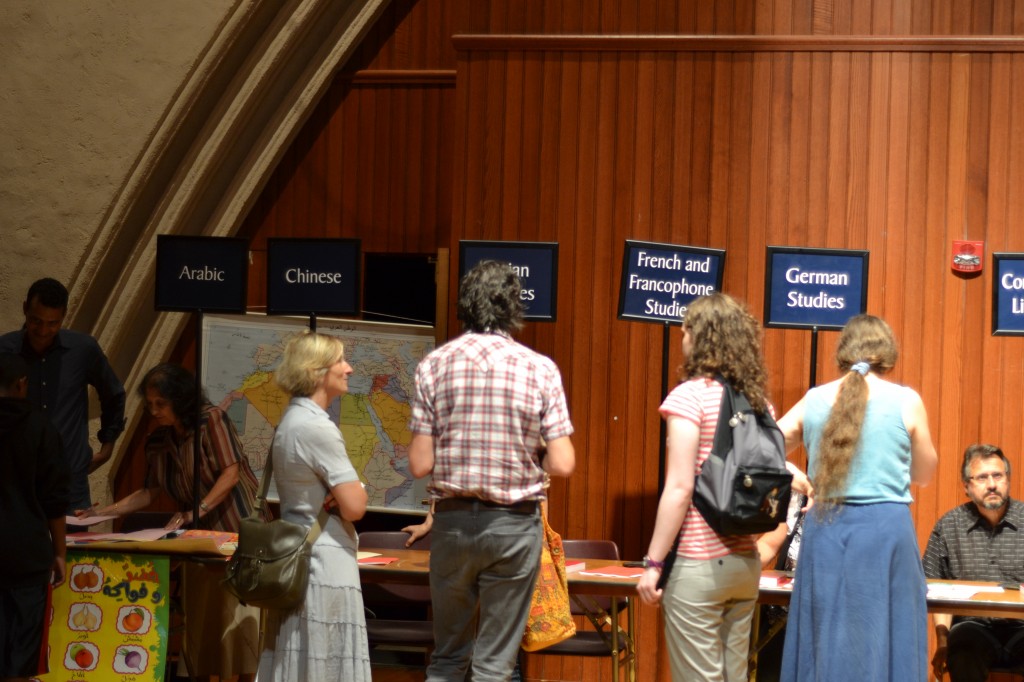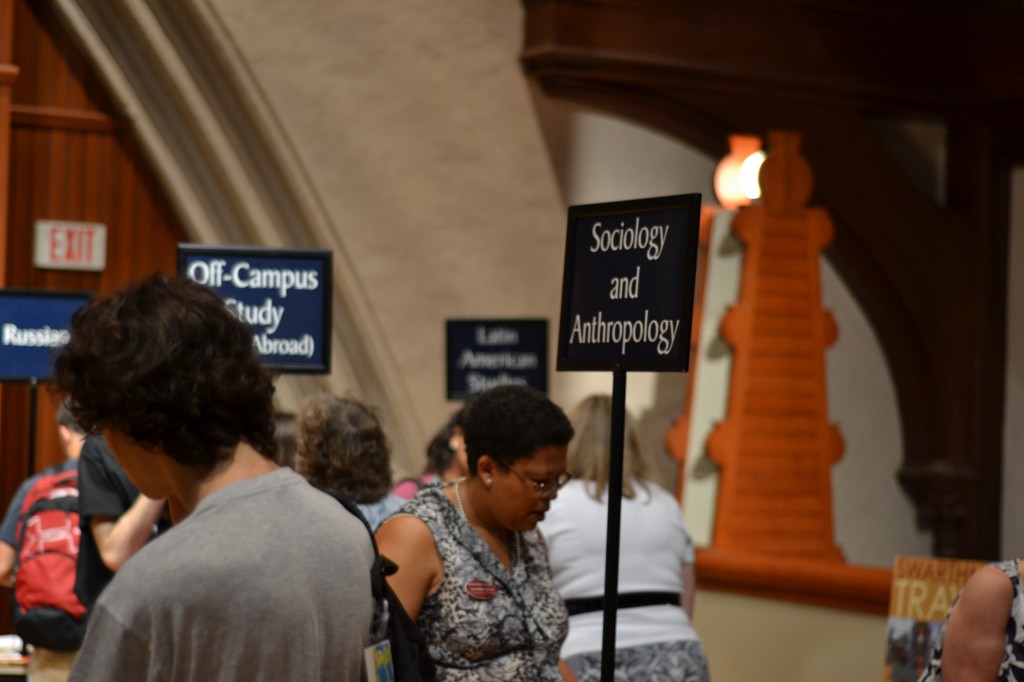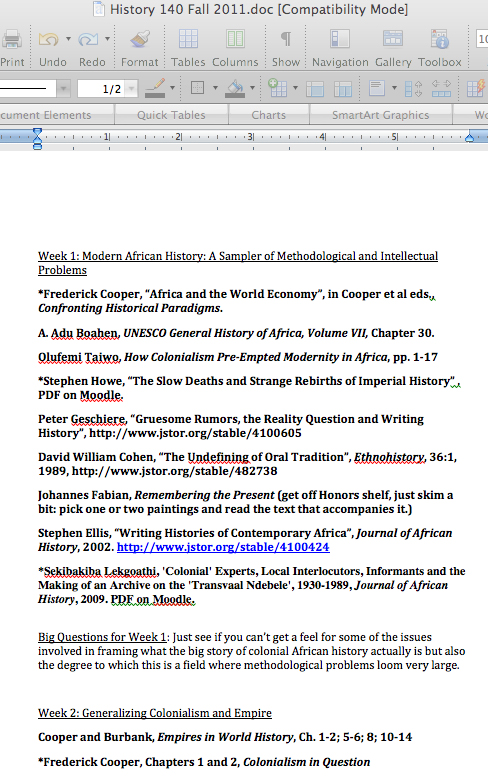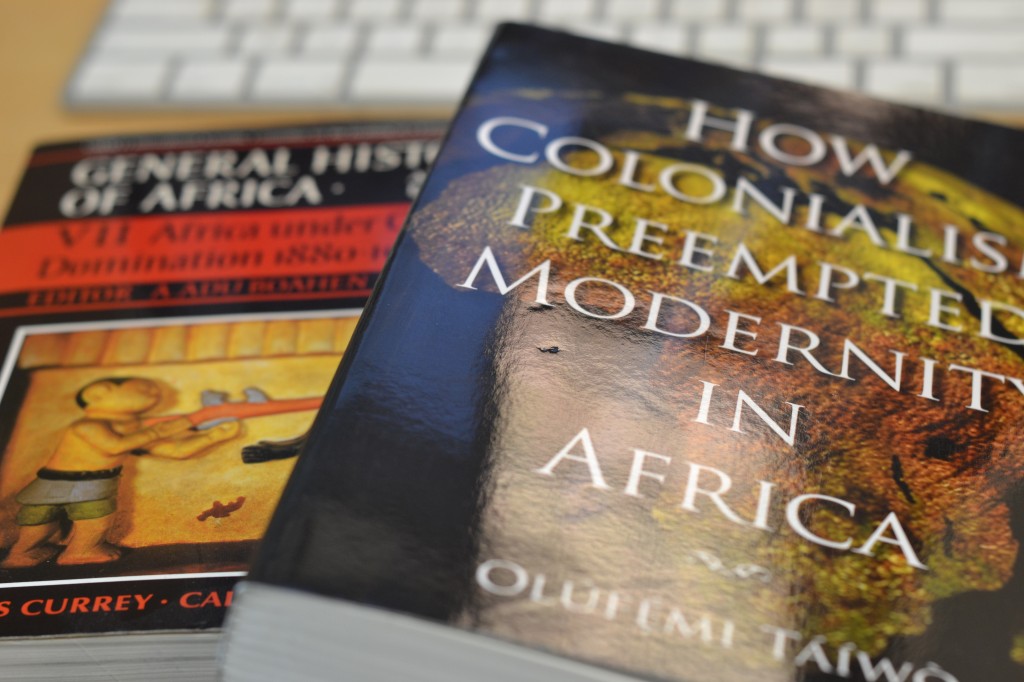While I don’t think there’s much I could say that could satisfy a recent commenter hereabouts, the question of the cost of higher education is an old theme at this blog, and longtime readers know that I worry about it a great deal. So let’s sort out some of the fundamentals once again, using a piece by Andrew Hacker and Claudia Dreifus in the current Atlantic Monthly as a jumping-off point.
1) Does all higher education cost what highly selective private institutions cost? No, as Hacker and Dreifus point out. So for one let’s keep in mind what’s much more affordable, what used to be much more affordable, and what’s expensive. Much more affordable: most community colleges, some public four-year universities, and some small private colleges. Someone seeking higher education who values only what an institution costs should attend these institutions. Hacker and Dreifus make this point prominently. If you object on a primal level to the current cost of highly selective colleges and universities, you have plenty of alternatives. If you feel you or your children must go to more expensive institutions, then you need to think about why you feel that. It implies that you think they do something better than the affordable alternatives, so figure out what it is. (Hacker and Dreifus think it’s all puffery and that the low-cost alternatives are exactly identical to their higher-priced equivalents. Inevitably, that means that the only explanation they have for why they aren’t preferred is conspiratorial Jedi mind tricks of various kinds.)
2) It’s worth asking why applicants (and their families) often do not have strong price selectivity. Or perhaps to put it more precisely, they do, but it’s not towards institutions which are at the lower price-point within their marketplace, it’s the opposite. This is an important contributor to high costs. Universities and colleges have increased tuition because they can, because people are willing to pay. This either means that higher education is now considered absolutely necessary (like health care) or it means that higher education is a Veblen good, that people actually see price as an informational signal of quality and that they are voluntarily willing pay higher and higher premiums for an improved quality of service, thus driving a constant process of upgrading and improvement. If it means that higher education is considered as necessary as life-saving health care (it doesn’t matter what a doctor tells me heart surgery is going to cost if it means I’ll die if I don’t and have a good quality of life for a considerable time if I do: I’ll pay it), then the question is why? It didn’t used to be that way. If it is that absolutely necessary, that has to involve a socioeconomic transformation far bigger than higher education itself, and not under the control of institutions of higher learning. At which point, if the cost is the problem, the solution involves something besides colleges and universities themselves.
3) Let’s say instead that the steady increase in the cost of highly selective higher education has mostly been driven by internal factors. If so, what drove the price up in the first place?
3a) Financial aid.
Many students attend expensive institutions at a discount, sometimes a considerable one. This has a big cost to the bottom line, and the cost is growing as a proportion of operating budgets at most highly selective institutions. The highest prices are charged in substantial part so that families of lesser means can afford to send their children to the same institution. You might wonder if just cutting the price in half with no discounts wouldn’t make it affordable for all (I know I have!) I think the answer is that this would make elite institutions far more affordable or burdensome for the upper middle-class (say, families with incomes between $100,000 and $250,000) but it would probably make it impossible for families at the lower end of the income distribution. That’s a discussion that’s worth revisiting, maybe, but this isn’t just some kind of greedy calculation on the part of universities.
3b) Waste.
As with almost any institution, everybody’s favorite target of clearly identifiable “waste” or “discretionary expenditure” is so miniscule a part of most budgets that you might spend more money trying to identify targets for cost-cutting than you would save when you finally found them. A serious reduction in the cost of selective, quality higher education will take eliminating or drastically reducing one or more areas of fixed costs.
3c) Externally driven costs.
Big areas of budgetary growth in the last two decades that are driven from outside include energy, health care and information infrastructure (libraries and IT). The first two have been issues for most employers. There are ways to cut those costs through best practices, and I suspect most universities have at least made a good start. The only way to make big rapid cuts are to simply stop doing some things that consume energy (reduce or eliminate heating, eliminate air conditioning, don’t have laboratories, etc.), to drastically reduce or eliminate health care to employees, or to lay off a lot of employees. The latter is something that employers have done in other sectors of the economy, and have already done in much higher education as well. Contract faculty and many staff at a number of universities and colleges receive poor to non-existent health care benefits, and are frequently let go any time belt-tightening is required. Libraries and IT are perhaps a more particular cost center in higher education. You can reduce libraries to a bare minimum or require students and faculty to pay most of their own IT costs. This seems to me to run pretty squarely counter to the point of higher education, so if you want to go that way, it might be faster to just eliminate higher education overall.
3d) Faculty salaries.
Some folks seem to have a hard time understanding this point, but if you take higher education on average, faculty are already paid much less than most professionals while still being required to possess extensive credentialing that has a substantial opportunity cost to obtain. Tenure is already absent in much of higher education. Much of the work of teaching is done by adjunct or contract faculty. Whatever the cost of the salaries of tenured senior faculty, the bottom line is that they’re not a terribly important contributor to the overall cost of higher education. Where they are, as in selective private institutions that focus heavily on the quality and breadth of teaching, you could achieve some substantial savings by reducing salaries and benefits to a significant degree. In some fields of study, you would very quickly hit a point (many colleges and universities may already be right at that point) where you could no longer hire quality faculty, because they would have employment options outside of higher education. Economics, biology, chemistry, engineering leap immediately to mind. You could probably staff a college full of amazing humanists for half the financial cost, though you’d pay other kinds of prices for doing that.
Tenure itself costs little, by the way. Or more precisely, it costs nothing compared to the idea that you’d just keep extending the contracts of strong teachers and researchers until retirement. The cost of tenure is institutional and programmatic, not financial: it keeps a university from responding rapidly to changing trends in knowledge. Arguably, this is a good thing independent of its costs. Some believe that an important responsibility of academia is the conservation of intellectual traditions as opposed to chasing momentary trends. Tenure is only a financial cost if you want to follow the growing norm in white-collar labor of firing people when they’re in their fifties even if they’re still doing great work simply to save on their salaries. Maybe that is what some people want, to have everyone in the same miserable situation except for the billionaires. I’d rather see if the whole society can’t go in the opposite direction and increase job security for most people.
The other big potential savings would be to just gut out a huge range of subjects taught in the contemporary academy. This is a popular option among those most disgruntled not just by the cost but among those who basically hate professors, intellectuals or anything approximating either. All I can say is if that’s the way you feel, you also have plenty of options. There are universities with nary a Women’s Studies professor in sight. Name your curricular phobia and you can find somewhere that will scratch that itch. So go ahead and scratch it and stop complaining about cost, because in this case costs aren’t what’s really bugging you. You’re just being a culture warrior hoping someone will pull the wooden horse inside the walls.
3e) Administrative salaries.
Faculty love to point to administration as the cost-growth villain. (I’ll probably write soon about Benjamin Ginsberg’s new book The Fall of the Faculty, which is a classic example of this genre of critique.) It’s true that growth in administrative salaries and positions outpaced faculty growth by a considerable margin at most institutions over the last twenty years. But in many cases that growth is a reflection of new missions that faculty, students, parents and government have demanded from higher education.
This ties into Hacker and Dreifus’ argument that what has driven up the cost of elite higher education is a huge expansion of facilities and services and the administrative staff necessary to run them. They mention “vegetable polenta and butternut soup” at Bowdoin as an example, which strikes me as a bit odd since that’s actually a pretty cheap-sounding soup to make. (I think this is typical of the way they fashion this argument, actually, via little sound bites about bicoastal elitism and obtuse descriptions of things like ‘no-loan’ programs that I think wouldn’t be out of place at a Tea Party rally.) But the overall point is a reasonable one to consider. The problem is, what’s driven the expansion of facilities and services? Largely it’s the customers themselves.
I’ve written before about what a no-frills non-residential college with an ambitious and innovative curricular design might look like. It would certainly have a much lower price tag. But you wouldn’t be able to have a college of that kind in many places in this country. You can’t enroll 500 18-21 year old students at a no-frills in a rural community with no rental stock and no other facilities or retail. This isn’t about creature comforts: you would have to build at least the minimal infrastructure to support those students as residents at that location.
If a college or university were in an appropriate location, a no-frills approach means that students would have to find their own athletic facilities, their own transportation, their own food, their own health care (physical and mental), their own extracurricular activities, their own information technology and broadband provider. The college wouldn’t be responsible at all for diversity issues or indeed for any relationships between students outside of the classroom. It really couldn’t afford to take an interest in the learning disability or individual circumstances of its students, and probably couldn’t afford financial aid, which is a complicated administrative burden. Addressing the career placement or other post-graduate situation of alumni would have to be very carefully circumscribed. A no-frills approach requires a rather old-fashioned idea of the classroom as a completely bounded and finite space, with no learning or activity that spills over into wider communities or connections. Enrolling students would certainly have to sign a waiver a zillion miles long: one thing the no-frills college couldn’t do without is a big legal staff.
Every subtraction of staff and facilities hits at some group of students, parents, alumni, publics or professors who demanded something of higher education beyond instruction, or who recognized that a teaching-intensive mission required an approach to instruction that went well beyond getting up in front of 300 students, lecturing at them and leaving the room. So subtractions in the name of cost-cutting are going to have to be accepted by those constituencies, which means they’ll have to value cost-cutting more than they value those services as a part of the overall package of higher education. I’d be curious to see what would happen at Swarthmore if an administrator seriously proposed lopping $10k off the tuition price in return for having no mental health services, no tutoring or academic support staff, no staff devoted to diversity or multiculturalism, no athletic facilities and no student activities funding. I think almost all of the students and their families, no matter how much they might object to the price tag, would regard those all as necessary to the institution.
—–
Which in the end makes this conversation an interesting mirror of the larger conversation about debt, cost and services in American society as a whole. Drastically reducing taxation, and subsequently government expenditure, sounds great to many people until it comes time to cut either entitlements or a range of expected services. You’re not serious about cutting budgets and costs on a major scale as long as you’re giving out Golden Fleece awards or bitching about butternut and polenta soup. Or for that matter even just lopping 10k off of the salaries of senior faculty. You’re only serious when you start specifying major areas of activity that you believe an institution (university or government) ought not to be engaged in. It’s nice to think that Hacker and Dreifus believe that there’s no difference at all in the classes at Glenville State College in West Virginia and Amherst College, though that’s roughly like me saying that I don’t see any difference in aesthetic quality between Kung Fu Hustle and Citizen Kane: it’s an opinion I honestly believe in but it’s also a pretty classic de gustibus non est disputandum sort of claim. On a lot of areas that can be compared outside of what Hacker and Dreifus thought during a guided tour, there are some pretty substantial differences. (Not the least the cost of living in the two communities.) Anybody serious about costs has to get real: what do think should not be done? Not having faculty, not having tenure, paying faculty far less regardless of the location of a university or college, shifting all operations online, are not serious answers beyond a certain point. You’ll also have to decide what other expected and demanded services to not have. And whether shit on a shingle really saves a lot of money over polenta soup.
There are also things that are hard to compare easily. It’s not straightforwardly that Amherst has more subjects or a wider curriculum: Glenville State has areas of study that Amherst doesn’t have. But those differences are telling in terms of a deeper set of differences: Glenville’s curriculum is substantially more directed towards applied and vocational subjects. This is a huge and very different discussion (one that I’ve convened here a great deal), one about both intellectual adaptability in a changing world and about the sources and character of cultural capital. The first consideration is one that selective higher education is usually happy to discuss, the second is a bit more fraught and difficult. But these are questions that also have to come into the room if we’re asking why people value some education as highly as they do.






